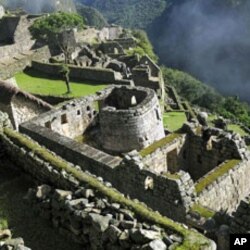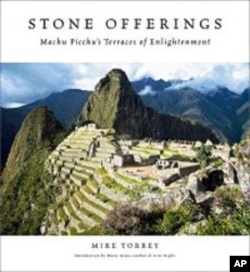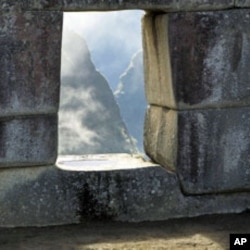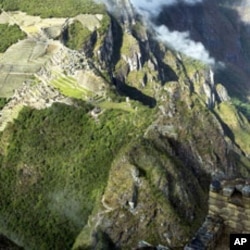Machu Picchu or Old Peak is the name given to the stone ruins of a pre-Columbian Incan city perched high atop the Andean peaks of Peru. The site was declared a World Heritage Site by the UN's cultural arm, UNESCO, in 1983.
But for nearly a century since its discovery by outside explorers, Machu Picchu has been an awe-inspiring symbol of the power of the Incan empire just before it fell to 16th century Spanish invaders.
In a newly published collection of images, American architectural photographer Mike Torrey captures the wonder and timeless significance of this mystical, historical site.
Author finds ancient site intriguing
Since he was a little boy, Mike Torrey says, he has been fascinated with Machu Picchu. It wasn't just the beauty of the polished stone block walls or the fact that this abandoned city sits atop a narrow ridge more than 2400 meters (8000 feet) above sea level. Torrey says he was also intrigued by the tragic history of Machu Picchu.
"This was a royal retreat. Very few people actually within the [Incan] empire knew about it. It was built starting around 1450 by the Inca people. It was only around for 90, 100 years when the Spaniards came to South America. They captured a lot of the Incas and eventually wiped them out. The Spaniards never found [Machu Picchu] or they would have destroyed it," Torrey says.
Machu Picchu is rediscovered
After the Incan civilization collapsed, the site was abandoned and the rainforest overgrew it for 400 years. Then in 1911, Machu Picchu was found once again. "It was rediscovered by Hiram Bingham, who was a Yale University professor in Latin American Studies. Hiram Bingham was looking for the last citadel of the empire, which was Vilcapampa; he was looking for another city. He found Machu Picchu, actually, and mistakenly thought it was Vilcapampa for his entire life," Torrey says.
Since Bingham's discovery, the Machu Picchu site has become a major tourist attraction. More than 2000 people on average visit it every day. Torrey says he was lucky to visit it not once, but twice, at the June and December solstices.
"When you get there, you just see it with awe. I read a lot of books. I had a lot of information. It was incomparable to seeing what was there. I think everybody feels something there, you don't know what it is. So I was trying to figure it out with my camera."
Torrey's lens captures the mystery of Machu Picchu
Torrey's two trips resulted in the book, "Stone Offerings: Machu Picchu's Terraces of Enlightenment." It's a collection of 100 photographs, featuring an extended forward by Peruviuan writer Marie Arana, who shares her own sense of awe at the place. Like her narrative, Torrey's finely-detailed photographs convey some of the indescribable energy surrounding this mysterious site.
Torrey says it was no small feat composing shots of the ruins without any tourists in the frame, but even more difficult was chasing the ever-changing angles of natural light. His images are filled with Machu Picchu's unique textures, such as the mist wrapping around jungle peaks and massive cut stones fitting perfectly against one another.
Torrey says a photo of a temple with three windows is one of his favorites. "I show one of the windows and the light coming through it. There are two mountains in the distance. The light was changing quickly, so I had to react so quickly. It's like you're photographing the light as well as the Machu Picchu itself."
Light was important to the Incas, too, says Torrey, and in another of his favorite photos, which was shot inside the Temple of the Sun, he captures the moment when a beam of sunlight marks the changing season. "The sun comes through the eastern window in June. They have the floor carved so when the light hits at the June solstice, it tells them it's the solstice," he says.
The genius and wisdom of the Incas
The architectural photographer says Machu Picchu is an example of how human and natural environments can exist in a well-designed and visually cohesive whole. This stone ruins site, he says, speaks about the genius and wisdom of the Incas.
"It tells us they were very connected to the earth. They studied the earth. They studied the sky. Their temples were aligned with the solstices. I found that this interconnection between the manmade and the natural world was most powerful. It has something that can inspire us as we're trying to become more green and sustainable," Torrey says.
The book, published by Lightpoint Press, offers a new take on the Incan ruins with lessons about the enduring strength and beauty of a city built in harmony with nature.











